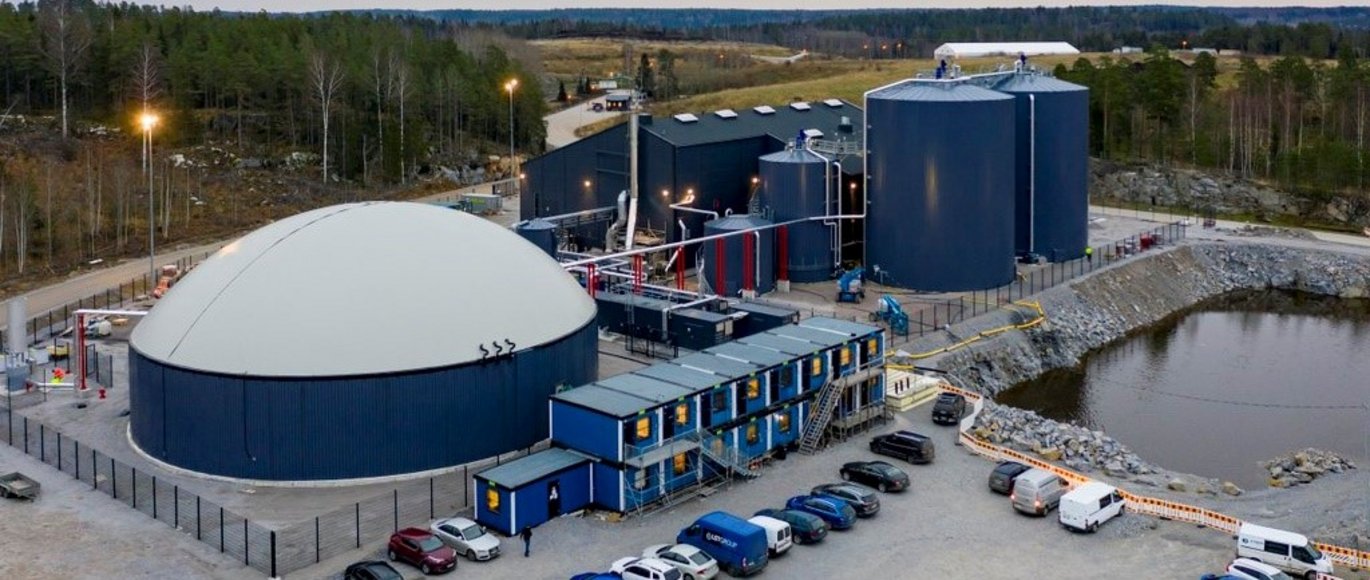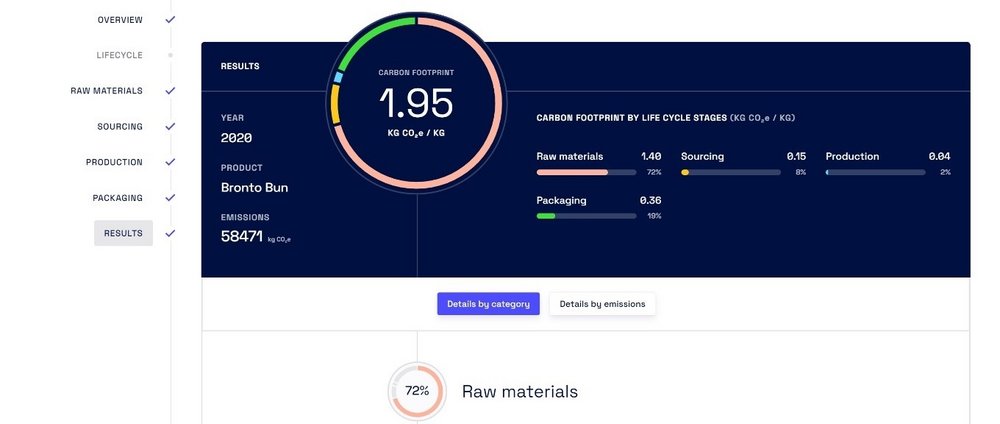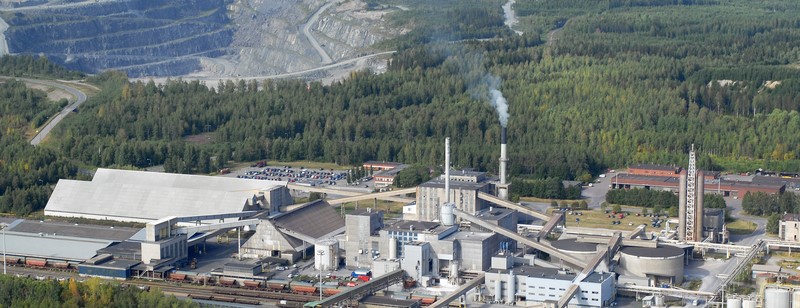Sustainable soil management connects with digitalization and circular economy in new business models in Finland
Finish companies provide digital and innovative approaches to sustainable soil management. Cloud computing, digitalization and circular economy shape sustainable agricultural soil management in Finland.

Finland is often quoted as being in the forefront of digitalization and innovation. However, does this show also in the development of sustainable soil management practices? We introduce three different companies who provide novel approaches to sustainable soil management in Finland. Cloud computing, digitalization and circular economy are shaping sustainable agricultural soil management as we speak. While sustainable soil management is at the core of the EJP SOIL, it is also important to understand how the theme connects with other aspects of sustainability.
Biocode connects cloud computing and life cycle analyses
Standards and practices boosting climate-smart sustainable food production are evolving and are further driven by increasing public and private interest in related services and products. The entire agri-food sector is still a source of greenhouse gases, while agricultural soils have been proposed as a potentially valuable carbon sink. Assessing efficiency of different sustainable production practices, including soil management choices, is complex and requires proper tools.

Biocode computational tools provide product-specific carbon footprint information.
An innovative Finnish company Biocode responds to this need by connecting cloud computing with life cycle analyses. Their digital computational tools provide product-specific carbon footprint information. Furthermore, their scenario analysis tools allow evaluating climatic impacts of multiple mitigation options, relevant for any customer who is interested in reducing carbon footprint of its products and services.
Notably, Biocode’s online service provides product carbon footprint assessments based on farm-level primary input data which enables farm-specific decisions to reduce emissions. Based on emission reductions, subscribers to the online service are rewarded with Climate Smart product tags and online profiles to stand out as a climate friendly choice for customers and other stakeholders.
But what role does soil have in the complex and diverse life cycles of food products? Quite a big one, says Ernesto Hartikainen, the CEO of Biocode: “Overall, primary production often constitutes a major share of the carbon footprint of a product”. This practically means that choices made in the field can have a large impact on the footprint of a product. For example, the choice of the soil and tillage method influences the estimate on carbon losses. Ernesto also points out that “Making the impacts of these choices visible can potentially drive choices related to soil use and management towards a more sustainable direction”. As processes controlling soil carbon are complex, Biocode also actively collaborates with Finnish research organizations to keep updated of the rapidly growing knowledge in the field of sustainable soil management. Considering the rapid developments, the evolving digital technologies may affect climate-smart and sustainable soil management more and more in the near future.
Yara Finland advances sustainability with renewables, gypsum amendments and digital solutions
While efficient on-farm utilization of fertilizer has received a lot of attention during the past decades, their sustainability is also connected with the emissions of the production processes. “There are large differences in the carbon footprints of fertilizers. The footprint of Finnish nitrogen fertilizers can be even 50% below those produced abroad”, says Tapio Lahti, Chief Agronomist of Yara Finland. Yara is further actively reducing the carbon footprint of the production. “In the near future our factories will be running onrenewable energy, producing green ammonia, which has a large and genuinely positive impact on the sustainability of the fertilizers”, states Tapio. In addition to the renewables, the company also currently invests in increasing the energy efficiency of the factories.
Mining and production of fertilizers produces also potentially useful side products. Particularly gypsum, a side product of apatite production, has shown to be potentially useful for sustainable soil management. “More than 10 years of research and development together with Finnish research organizations has shown that gypsum can clearly and cost-efficiently improve soil structure and decrease leaching of nutrients and suspended solids from agricultural fields”, mentions Lahti. Simultaneously, the company has invested in developing expertise in providing homogeneous gypsum product with an efficient distribution chain. The usage of the side product from the production lines can be considered as an example of how circular economy can meet sustainable soil management.

Yara fertilizer plant and phosphate rock mining in Finland (Copyright©2004-2021, Yara International ASA).
The company utilizes new digital solutions to boost efficient on-farm usage of their products. Satellite data and related algorithms provide timely information for precise application of fertilizers, which can improve the sustainability of farms. Considering the efforts to reduce the environmental footprint of the products and considering the advantages of circular economy, the sustainability of fertilizer products may further increase in the near future.
Gasum improves nutrient and carbon cycles with circular economy
Circular economy and bio-based fertilizers can provide many opportunities related to sustainable nutrient and carbon cycles. A large Nordic energy company Gasum is exploring this potential by combining energy production with the production of bio-based fertilizers made of biogas residues. “The utilization of these nutrient and carbon reserves requires expertise and adaptation of the practices to local conditions”, states Katja Alhonoja, the development manager of Gasum. “Furthermore, the demand for the recycled fertilizers has been on a good level, as all produced fertilizers have been sold out”, she adds. According to surveys conducted by Gasum, also fertilizers produced from waste waters have received positive feedback from farmers.
While the bio-based fertilizers comprise only a minor share of the income of Gasum, their production supports achieving sustainability goals of the company. “The major share of biowastes of the society goes through our biogas plants. Biogas production plants are biorefineries at their best and excellent examples of the circular economy by turning waste into energy and raw materials for industry and by producing fuel for road and maritime transport. Returning the carbon and nutrient resources for instance to agricultural fields has several positive impacts on sustainable food production, including enhancement of the soil structure and an input to the soil carbon and nutrient reserves“, states Katja. These bioresources can be processed in several ways to provide a variety of products. “There would still be a lot of potential in the efficient and sustainable utilization of biowaste resources. At the moment, we design our development and production processes based on the markets and existing policies”, adds Katja. The production of bio-based fertilizers depends on policy decisions affecting substantially the production and usage of bio-based products. “Efficient utilization of the variety of biowaste resources requires also sufficient policy framework”, underlines Katja.
In addition to the current production and use of the bio-based fertilizers, there are still many opportunities and challenges to be utilized in Finland, including cost-efficient processing and transport of spatially fragmented manure resources. Also, active monitoring of the level of potentially harmful substances is one part of the production: “Currently, the levels of harmful substances are clearly below the accepted threshold values. In addition to active monitoring of the levels, we are actively participating in research projects to have the latest knowledge related to these themes”, adds Katja. It is interesting to see where the circular economy solutions and smart utilization of the nutrient and carbon reserves will take us in the near future.
For further information
The newsletter is based on interviews conducted in the spring 2021 by Mika Tähtikarhu.
Mika Tähtikarhu: mika.tahtikarhu@luke.fi
Elina Nurmi: elina.nurmi@luke.fi